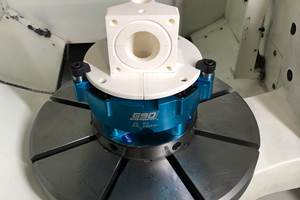3D Printing vs. CNC Milling for Prototyping
Many factors, such as price, part size and material come into play when deciding whether 3D printing or CNC milling is the best method for making a prototype.
In the process of assessing what is needed to set up a prototyping lab, the first order of business is deciding between 3D printing and CNC milling. Both options have proven critical to modern manufacturing processes, with each one featuring a roster of benefits over traditional manufacturing methods. Ultimately, the decision depends on a few things: price range, the size of the part/prototype and the type of materials used. While these features will differ for specific industries, projects and purposes, it is important to recognize the prevailing bias toward 3D printing over CNC milling. There are some misunderstandings about the benefits of 3D printing over CNC milling, and this article will set the record straight. Although 3D printing undoubtedly has its place, it’s important to not be short-sighted when evaluating the merits of CNC mills with respect to industrial prototyping. This information will help guide decisions about what a specific business needs when setting up a prototyping lab.
Defining 3D Printing and CNC Milling
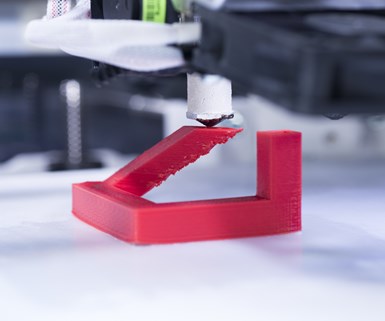
3D printing, or additive manufacturing, produces parts by building up layers of material, such as plastic or metal.
Techopedia describes 3D printing as “a manufacturing process through which three-dimensional (3D) solid objects are created. It enables the creation of physical 3D models of objects using a series of additive or layered development framework, where layers are laid down in succession to create a complete 3D object.” For this reason, 3D printing is also referred to as additive manufacturing.
According to Investopedia, “3D printing technology is already increasing manufacturing productivity, and has such potential that it could massively disrupt the manufacturing logistics and inventory management industries — if it can be successfully used in mass production, and if manufacturing becomes more local.” Here are 3D printing’s limitations: the process isn’t fast or affordable for mass production.
On the other hand, according to SearchERP, “Computer numerical control

CNC machining uses a small computer to remove material, producing a part.
(CNC) machines automate the control of machine tools through the use of software embedded in a microcomputer attached to the tool. It is commonly used in manufacturing for machining metal and plastic parts.”
A common misconception about CNC is that this automated control comes at a cost. CNC is often inaccurately assumed to be more expensive, in part because of the belief that highly skilled labor is required. In reality, CNC machining has made significant strides away from these initial truths.
Uses for 3D Printing and CNC Milling
With respect to the industrial use of rapid prototyping via 3d printing, Sculpteo’s 2019 State of 3D Printing reports that “Manufacturers are increasing their reliance on 3D printing as part of their broader manufacturing strategies, with production use up to 51% of all respondents from 38.7% in 2018.”
This shouldn’t be surprising, particularly considering some highlights published by Forbes’ 2019 State of 3D Printing: “Mass customization and support for configure-to-order and engineer-to-order product strategies also continue to be a high priority this year, continued the trend since 2015. Increasing production flexibility is the third area of focus that guides additive manufacturing strategies today.”
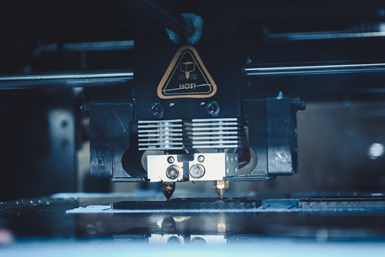
3D printing can produce parts quickly and inexpensively, making it a good fit for rapid prototyping.
According to this report, eight industries featured in the research design study: industrial goods (13.6%), high tech (10.6%), services (9.9%), consumer goods (8.6%), health and medical (6.2%), automotive (5.7%), aerospace and defense (5.5%), and education (4.9%), illustrating the diverse potential of 3D printing to support and benefit various verticals.
Currently, according to Engineering.com, “Common manufacturing processes that use CNC machines include bending, drilling, hole punching, gluing, grinding, laser cutting, flame and plasma cutting, routing, picking and placing, ultrasonic welding and more. Mills, lathes, electric discharge machining and water jet cutters often operate using CNC.”
However, in Engineering.com’s Battle of Manufacturing: Additive vs.
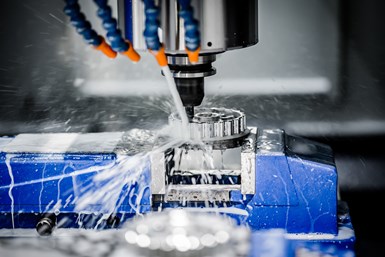
CNC milling produces prototypes quickly and inexpensively, and often at a higher quality than 3D printing.
Subtractive, CNC machines reign supreme: “Although additive manufacturing has been making some impressive inroads in the aerospace and automotive industries, CNC machining remains the go-to for the vast majority of manufacturers.”
Evaluating Additive vs. Subtractive Manufacturing Processes
In order to determine whether a prototyping lab requires 3D printing or CNC mills, users first consider whether the products are designed to be most effectively and efficiently delivered according to additive versus subtractive manufacturing processes.
According to Market Business News, “Besides eliminating the layering of additive processes, subtractive processes have other advantages. They offer a variety of surface finishes, doing away with the ‘stepped’ surfaces often found in many additive processes. The finish can be functionally important if parts must slide and cosmetically important if the prototypes are to be used in market testing.”
Understanding Additive vs. Subtractive Applications

Parts made via additive manufacturing often have “stepped” surfaces, and the process isn’t fast or affordable for mass production
Although the newcomer between the two, GE Additive explains that “Additive manufacturing is already used to produce an impressive array of products.” These products primarily feature in aerospace, automotive, healthcare, and product development.
Despite the trending nature of 3D printing in various industries, the fact remains, according to Ian Hutchings and Philip Shipway in Tribology (Second Edition), “Subtractive manufacturing gives you the opportunity to design, prototype, and manufacture in end-use materials. It is an appropriate choice for parts used for small and large volume production runs, to obtain specific finishes, or to obtain specific mechanical properties.”
For this reason, Mr. Hutchings and Mr. Shipway continue, “Subtractive processes are very widely used in manufacturing… Lathe-turning, milling, drilling, sawing, thread-cutting and gear-cutting are some examples of subtractive processes involving metal-cutting that are traditionally carried out in specialized machines.”
Ease of Operating 3D Printers and CNC Mills
In general, explains 3Dnatives, 3D printing is touted as easier to operate compared to CNCs. The main reason is that “once the file is prepared, you just need to choose the part orientation, fill, and supports if needed. Then once printing has commenced, no supervisor is required and the printer can be left until the part is finished.”
Because CNCs are more involved, with respect to labor, there is a
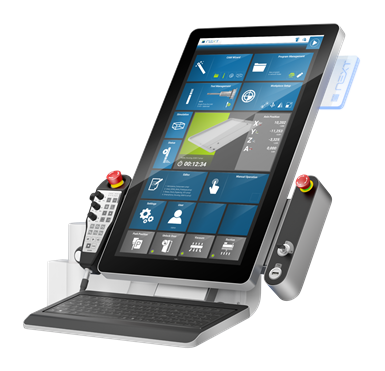
3D printers are often touted as being easy to use, but some CNC machines are becoming easier to use as well. Datron’s machines have a CNC that is designed to look and operate like a smartphone for ease of use.
pervasive belief that CNC machining requires a trained machinist. While that might have been the case back in the day, times have changed. Machine tool manufacturers such as Datron have developed ways to streamline production workflows from start to finish, eliminating expertise bottlenecks. A high-speed machining application enables practically anyone can set up a job with an easy-to-use touchscreen interface. Datron’s machine also incorporates multiple features that ease set up—it can walk a novice through the eight-step process of setting up a CNC machine for the first time. Ultimately it takes an average of only one to two days of training to feel comfortable and confident using the technology.
The interface is designed to appear and function similar to a smartphone, complete with a camera and mechanical probe system which automatically registers the part, mitigating the need for a skilled technician to input this information. Integrated workholding solutions and cutting tool technology are inclusive, keeping the entire process in house by removing the need to spec out and purchase similar components elsewhere.
Know Your Limitations: Accuracy, Size, and Geometric Complexity
In 3D Printing vs CNC Machining — Which is the Best Option for Your Prototype?, Josh Biggs writes, “For one, CNC machining is a great option if you’re looking for great dimensional accuracy. In addition, CNC machining can work with materials that cannot be printed yet, such as wood, for instance. CNC machining also beats 3D printing when it comes to working with metals and works just as well with plastics.”
He goes on to assert that, “In addition, CNC machines offer more precise results usually. CNC machines are the better choice if you need very narrow pieces or have incredibly tight tolerances. Nothing else matches the 0.01 mm tolerances.”
Even the team at 3Dnatives, which is dedicated to additive manufacturing, reports a considerable advantage of subtractive manufacturing: “In terms of tolerance, CNC machining is superior to all 3D printing processes.” However, when tasked with manufacturing parts featuring high geometric complexity, 3D printing has the advantage.
Weighing the Costs: 3D Printing vs. CNC
As you can see, manufacturing isn’t a single-solution proposition. The amount of money required for a prototyping lab will depend on not only what it will produce, but the size and how many items it will produce. For instance, according to Mr. Biggs’ simple cost-benefit analysis, “If you’re making a single prototype, 3D printing is almost always cheaper. For small runs, 3D printing is generally more affordable. However, the price will vary based on the material used… CNC machining is cost-efficient in larger runs. If you’re making 50 to 100 prototypes, CNC machining is probably the better value.”
Interesting Engineering published “Common Misconceptions about CNC Machining Production,” dispelling the myth about costly CNC processes: “One of the most common misconceptions is that CNC machining services are expensive. In reality, pricing for CNC prototyping can start as low as approximately $100 for a single part, and the unit price drops dramatically for manufacturing parts in higher quantities. Because of automation and the economy of scale, CNC machining is one of the most economical options for producing parts in bulk numbers. Whether you have a smaller project that needs a unique prototype for a single part or need to mass-produce large quantities.”
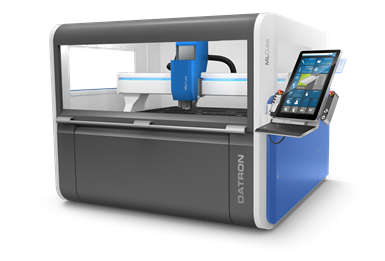
Datron’s machine tools are designed to provide high RPM in a small footprint, along with energy savings and a clean manufacturing process.
When it comes to 3D printers, the options, sizes, and price range runs the gamut, and so material possibilities. In addition to unknown or ill-defined material costs, operators usually require training, which represents an investment.
Datron’s cutting machines accommodate plastic, wood, aluminum, and steel from any vendor, allowing users to estimate and establish the cost of materials up front. There is no advanced training required, making Datron CNC machines a cost-effective alternative to 3D printers.
Waste Not, Want Not
Given the nature of subtractive manufacturing — stripping layers of material away to create a product — not to mention the tools required, it should come as no surprise that CNC machines can leave a mess behind.
Energy.gov evaluated these impacts in a 2015 review, “Innovating Clean Energy Technology in Advanced Manufacturing.” The report highlights additive manufacturing ‘s potential to “save energy by eliminating production steps, using substantially less material, enabling reuse of by-products, and producing lighter products.”
The report continues, “Building objects up layer upon layer, instead of traditional machining processes that cut away material, can reduce material needs and costs by up to 90%. AM can also reduce the ‘cradle-to-gate’ environmental footprints of component manufacturing through avoidance of the tools, dies, and material scrap associated with CM processes. Additionally, AM could reduce waste by lowering human error in production.”
A Cleaner CNC Solution
Datron has fine-tuned its high-speed machining equipment in order to eliminate the mess, making it possible to remove finished parts without deburring or degreasing. What’s more, Datron’s CNC tools and accessories offer the highest RPM available in the smallest footprint machine on the market.
Typically, CNC milling machines with industrial capabilities feature large motors that generate a great deal of heat, which require oil to cool and lubricate the machine components. Disposing of oil is necessary, but poses a risk to the environment.
Datron has developed its machines to be compact, efficient, and quiet. This keeps the heat factor down, removing the need for oil. The machines mill with alcohol, which evaporates during cutting, keeping all parts and components dry and clean. Because the machines don’t require the same amount of heat, oil, or flood coolant, they also offer energy savings.
The Verdict: 3D Printing vs. CNC Machining
The needs of a professional prototyping lab are best determined by the specific products it will produce. Both 3D printing and CNC machining can work, or even complement each other, depending on manufacturing needs.
In fact, as this article from Fabbaloo shows, there are several cases for combining 3D printing and CNC machining, primarily due to tolerances, time, and/or a significantly sized workpiece. Moreover, “Combining these two processes doesn’t require the complex workflow you might be envisioning.”
Datron Dynamics | 603-672-8890 | datron.com
About the Author
Bill King
Bill King has nearly four decades of experience in the manufacturing industry. He started his career in product design and was part of the first company in North America to purchase a Datron machine. He was so passionate about the technology, he joined forces with Datron in 1996 to introduce it to other North American industries. Mr. King has led the team on the foundation of enriching the lives of their customers, employees and community around them.
Related Content
Digitalization and Done-In-One Reign Supreme at BIEMH 2024
European manufacturers may have a different balance of markets than their U.S. counterparts, but the practical challenges they must overcome are often similar — as are the solutions.
Read MoreCan Machining Metal 3D-Printed Parts be a New Business Opportunity?
Perhaps. And shops could use their existing CNC machines to remove 3D part-print supports, to trim parts and so on. But dedicated robotic machining systems could be an alternative.
Read More5 Big Themes in Additive Manufacturing at Formnext Forum: Austin
As manufacturing advances with additive, the advance increasingly emphasizes these five themes.
Read MoreGift a 3D Printer to an Employee?
Some shops have purchased inexpensive polymer 3D printers for their operations. Does it make sense to take this a step further and give (or loan) a sharp young employee one to experiment with at home? This small investment could pay off for your shop in different ways.
Read MoreRead Next
Fast Prototype To Production
When a shop designs, develops, manufactures and markets a range of high-accuracy, high-volume components, it must depend on high-speed machining capabilities incorporated in its machines’ CAD/CAM software. Oscor Inc.
Read MoreAdditive Manufacturing in the Turning Shop
Additive manufacturing will not be replacing turning operations any time soon, but the two processes can complement one another.
Read MoreDo You Have Single Points of Failure?
Plans need to be in place before a catastrophic event occurs.
Read More

















